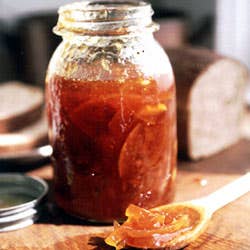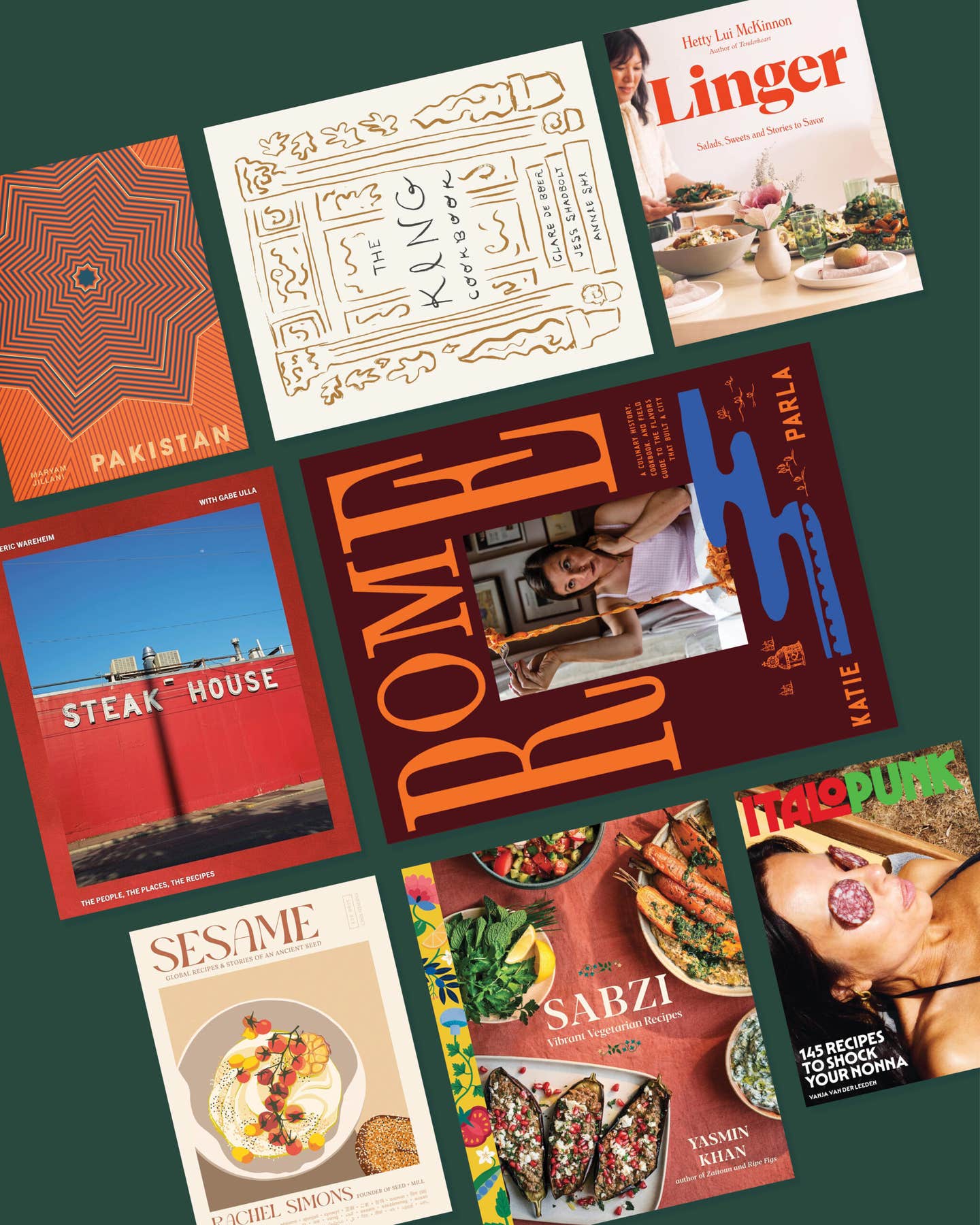
Marvelous Marmalade
One devotee was so seduced by its burnished glow and its tangy bite that she set off for Scotland to be schooled by the experts.
You're researching marmalade?" asks my taxi driver, amused at such reverence for a commonplace condiment, as we head out of Glasgow. I reply that to me there is nothing ordinary about this transformation of bitter oranges and sugar—that it seems nothing short of an alchemical miracle. "Well, you've come to the right place," he says, adding proudly, "My wife makes marmalade too."
I am on the way to Mo Scott's Earlshill Farm in Lochwinnoch, some 20 miles southwest. My quest began when, living in upstate New York, I wrote to the Sunday Post in Dundee—one of the legendary capitals of marmalade—asking for recipes and anecdotes. I received nearly 90 replies from all over Scotland, enclosing recipes for marmalades as familiar as bitter orange and as esoteric as kumquat. Many of my correspondents were eager to share their stories, so I set out on a pilgrimage to hear them.
"You've got to grab those sevilles when they appear in the markets," Mo Scott, a tall brunette standing behind a blue Aga stove, tells me when I reach her farm. She explains that the sour oranges (Citrus aurantium) that give traditional marmalade its distinctive bite usually arrive in January (elsewhere they can appear anytime between December and March) and are quickly snapped up.
Following her mother's recipe, Scott scrubs the oranges clean, quarters them, places the seeds in a muslin bag, and finely shreds the fruit. She then places the oranges and seeds in a kettle, covers them with water, and soaks them overnight. The next day, after boiling the mash for two hours to soften it and intensify its flavor, Scott removes the seeds, weighs the pulp, and stirs in an equal ratio of sugar. "For snap", she says, she adds pureed pippin apples and ginger. The mixture is boiled for another 25 minutes, until it reaches the setting stage, and is spooned into sterilized jars. "It's all about chemistry,'' declares Scott, pointing out that as long as one keeps to the equal ratio of sugar to pulp, marmalade can accommodate some improvisation—not just apples or ginger but lemon juice for zing or treacle for rusticity and color. Unfortunately, I can't wait for Scott's dense, rich creation to cool, but I take some jars away with me.
A few hours later and three miles away, in Lochwinnoch High Street, I visit Margaret Cooper, 83, a delicate-featured lady with a ready smile, and her friend May Bowald, 84, round faced and chubby. (Sadly, Cooper has since entered a nursing home, and Bowald passed away a few months later.) They're drinking tea and eating brown bread with marmalade. Though Cooper's days of making dozens of jars of marmalade for church sales are over, she continues to make bitter orange marmalade for herself, using Ma Made, a prepared pulp, which still allows her to personalize her batch. Confessing a weakness for tart marmalades, Cooper recalls the prewar years, when she worked in the wool mills and a divine aroma would waft from the nearby Robertson & Son jam factory. "I still buy Robertson's lemon marmalade," she states quietly.
The next day I am invited for a_ blether_, or chat, with Joe and Agnes McBride in Clydebank, near Glasgow International Airport. Joe meets me at the train station on a foggy evening, and we clamber aboard a double-decker bus, which weaves through the back streets before dropping us near the couple's cozy flat. Over tea and toast, Joe presents a squat jar of his sweet orange (Citrus sinensis) marmalade, which is brightly colored, fragrant, and softly textured. Like many Scotsmen, he is the marmalade maker of the household.
After too short a chat and too many sweet cakes, the McBrides pack me up with goodies for my train trip to Dundee itself. A somewhat careworn city, Dundee still bears traces of its industrial past, when marmalade making, book publishing, and jute processing dominated its economy. The story behind the fame of dark, robust, thick-cut Dundee marmalade is that in the late 1700s Janet Keiller, a grocer's wife, acquired a load of seville oranges from a storm-driven ship in the harbor. With her husband's sugar stock, Keiller turned the oranges into a preserve so popular that in 1797 the firm of James Keiller and Son was established to manufacture it commercially.
The word marmalade comes from marmelo, Portuguese for quince, which in turn derives from the Greek melomeli, a honey-sweetened quince preserve prescribed as an aid to digestion. By the late Middle Ages, the Portuguese were making marmelada, a sugar-and-quince paste similar to what is now called membrillo in southern Europe. According to C. Anne Wilson's definitive work The Book of Marmalade (St. Martin's/Marek, 1985), marmelada arrived in 1495 in London, where it was enjoyed as a sweetmeat and an after-dinner digestive.
Orange marmalade probably evolved as cooks experimented with making preserves from fruits other than quince. Sour oranges had been exported from Spain to northern Europe since the Middle Ages, and 17th-century English recipes proffer methods for conserving whole oranges in syrup "after the Portugal fashion". In the mid-17th century, the French chef La Varenne created a quince preserve thinner than its predecessor, using a method that likely influenced all preserve making. The first printed English recipe for marmalade—a jelly of seville oranges, lemon juice, and an equal weight of sugar—appeared in 1714, in Mary Kettilby's A Collection of above Three Hundred Receipts in Cookery, Physic and Surgery.
I am on a ferry steaming toward the Isle of Bute, west of Glasgow, near the end of my stay. It is blustery, and I'm looking forward to a cup of tea with Ronnie Kay—the taxi driver from my first day—and his wife, Doreen. They welcome me into their home, a former boardinghouse facing the sea, and we sit before the fire enjoying toast with Doreen's bright orange marmalade. She explains that she prefers a less tangy marmalade and uses both sweet and seville oranges as well as lemons to achieve the desired balance.
These days, the definition of marmalade has been stretched to include conservelike reductions of caramelized vegetables—but the traditional, bittersweet orange preserves are in no danger of dying out. I have a pantry full of jars of the homemade marmalade I brought back from my Scottish pilgrimage to prove it.
Keep Reading
Continue to Next Story










